19+ Sample Building Inspection Checklist
-
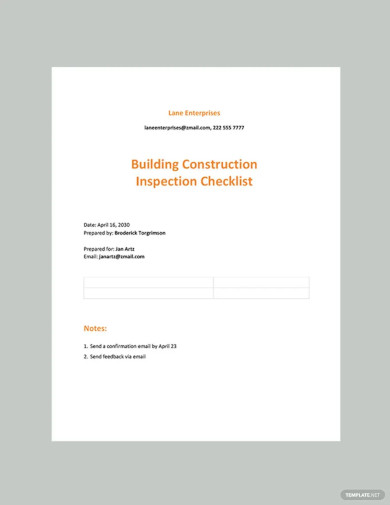
Building Construction Inspection Checklist Template
download now -
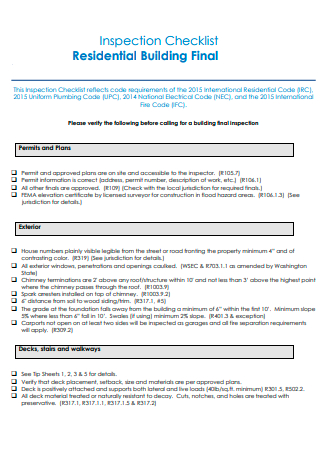
Residential Building Final Inspection Checklist
download now -
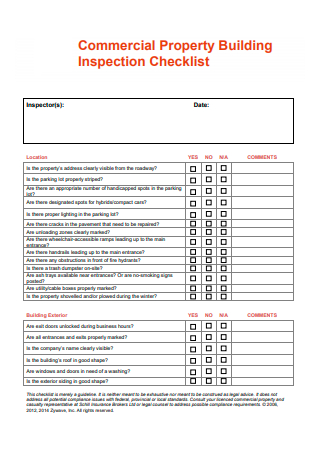
Commercial Property Building Inspection Checklist
download now -
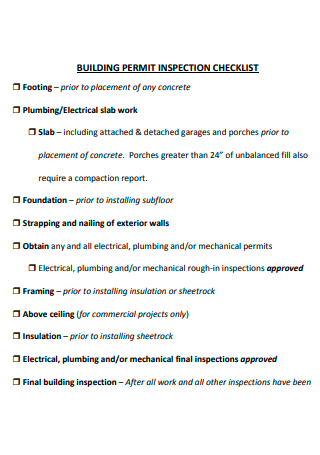
Building Permit Inspection Checklist
download now -
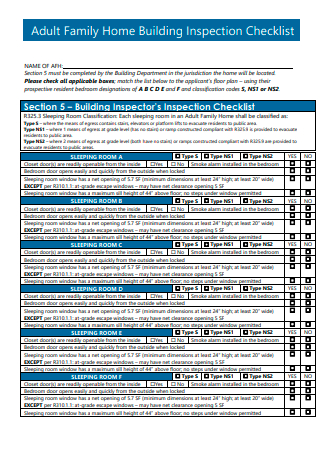
Adult Family Home Building Inspection Checklist
download now -

Formal Building Inspection Checklist
download now -
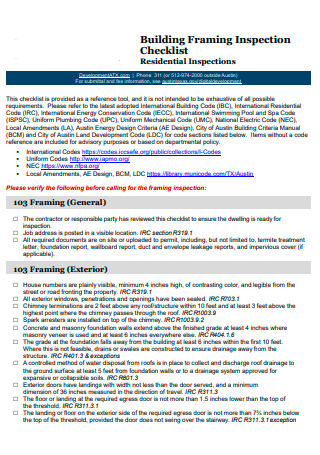
Building Framing Inspection Checklist
download now -
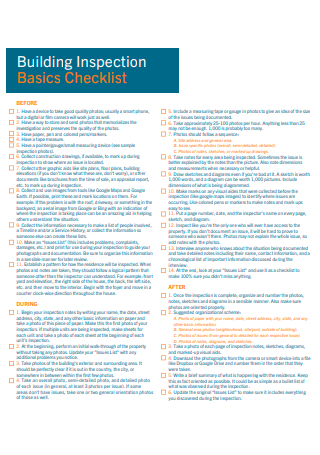
Basic Building Inspection Checklist
download now -
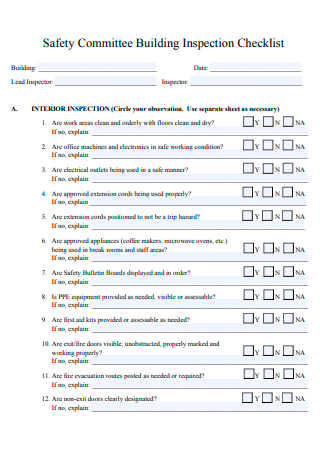
Safety Committee Building Inspection Checklist
download now -
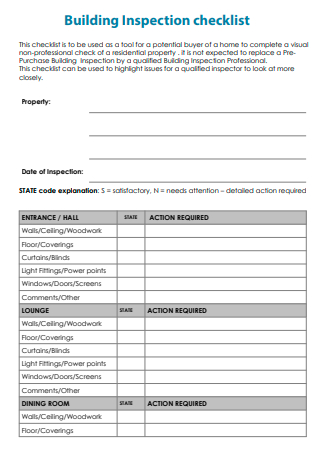
Building Inspection Checklist Example
download now -
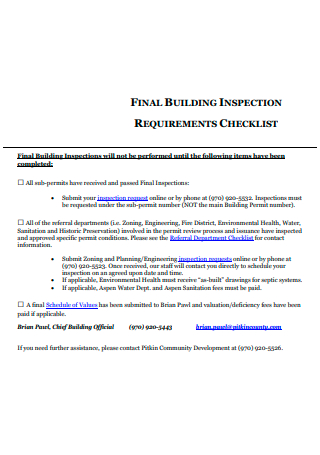
Final Building Inspection Requirements Checklist
download now -

Building Inspection Checklist Format
download now -
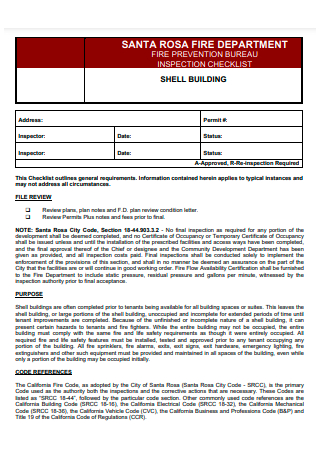
Shell Building Fire Prevention Inspection Checklist
download now -
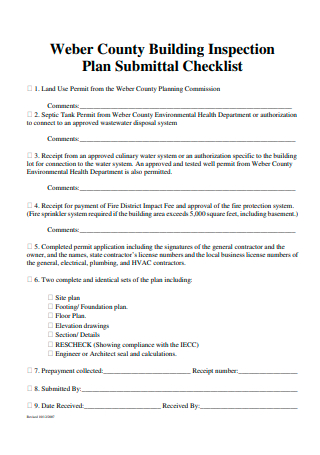
Building Inspection Plan Submittal Checklist
download now -
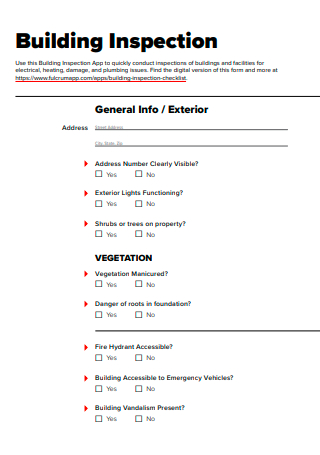
Simple Building Inspection Checklist
download now -
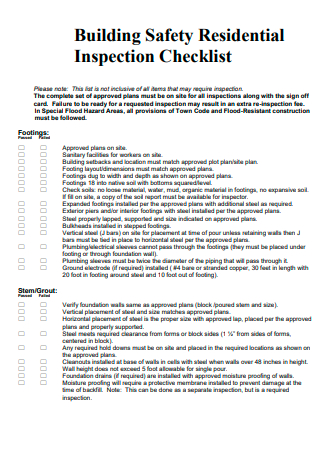
Building Safety Residential Inspection Checklist
download now -
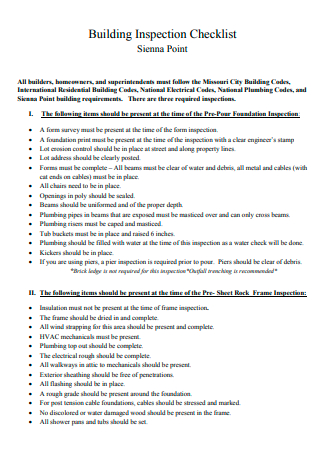
Building Inspection Checklist in PDF
download now -
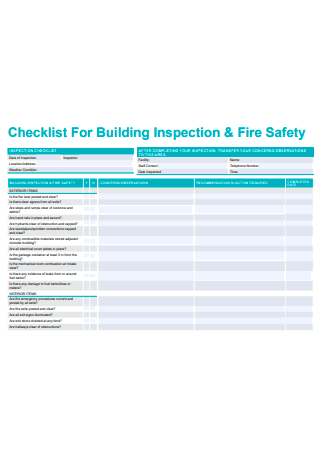
Building Inspection and Fire Safety Checklist
download now -
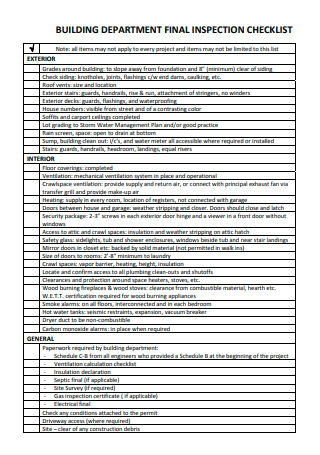
Building Department Final Inspection Checklist
download now -
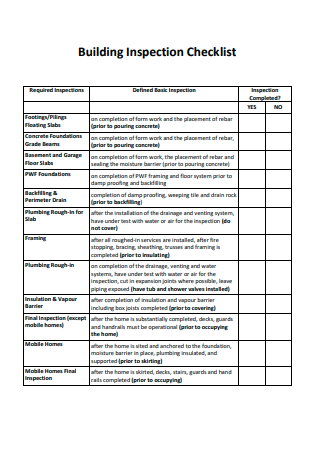
Standard Building Inspection Checklist
download now
FREE Building Inspection Checklist s to Download
19+ Sample Building Inspection Checklist
What Is a Building Inspection Checklist?
Inspection Issues That Are Frequently Encountered
How to Write a Building Inspection Checklist
FAQs
Who performs a commercial building inspection?
Why use a building inspection checklist digital template?
What is the purpose of inspection in buildings?
What Is a Building Inspection Checklist?
A Building inspection is carried out by a building inspector and is usually qualified in one or more fields, allowing them to make a professional judgment about whether a structure complies with the building code standards. A building inspector can be qualified as a residential or commercial building inspector, as well as a number of other specialty-focused inspectors that assess the state of a building at different stages of completion. Inspectors may also be able to put a stop to the building until the inspection is finished and authorized.
Inspection Issues That Are Frequently Encountered
An inspection report may highlight cosmetic problems and simple fixes, such as broken window glass. These little details, on the other hand, seldom cause a transaction to fall apart. A buyer’s decision to back out or seek a discount on the contract price is typically based on the cost of the difficulties, which are often disguised. Some of the most frequent items that fail a home Inspection are listed below.
How to Write a Building Inspection Checklist
Smaller companies can operate out of single rooms or start-up cafés, while bigger enterprises usually take up whole buildings, if not multiple buildings. Even small businesses function from locations that must be monitored by someone else. It’s important for these businesses that the building they are in is in good working order. Knowing how to create a building inspection Checklist is an essential part of any facility or property manager’s documents. We’ve already gone over some general guidelines for creating successful checklists, but this blog post dives even deeper into building-specific recommendations.
Step 1: Common Corridors
All types of corridors, including aisles, halls, corridors, and stairwells, should be clear of anything that might block individuals from departing a place. If a violation occurs, the next step is to relocate the furniture to a more appropriate location. If you need assistance, don’t be afraid to ask for it. For sprinkler heads to work correctly, no storage or other things should be put within 24 inches of the ceiling and 18 inches of the sprinkler head.
Step 2: Check the Exits
This should be obvious to everyone: exit areas should always be cleared out so that people may escape the scene in the event of an incident or accident. As a result, ensure sure nothing is blocking the exit paths. This includes the exit lights; make sure they are visible and functional. Keep an eye out for any fire doors that should be closed. Typically, fire doors lead to a stairwell. They should not be propped open since this might result in serious repercussions if the structure catches fire.
Step 3: Office rooms
All sections of the facility, including office spaces, should be maintained clean and organized. It’s also critical to keep power and data cords clutter-free. At any given moment, there should not be too many seats or individuals in a single working area. Conduct Workplace Inspection checklists to make sure of the spacing of offices. The maximum number of persons in a place is determined by the number of exit doors available. If there are too many chairs in a room, it may be difficult to get out in an emergency. It is extremely important to assess the capacity of each building and office space.
Step 4: Open Flames
Have clear instructions on whether candles and other open flame products or devices are permitted in the building, as well as the conditions that must be met if they are used. Extinguishers must be readily available, and the position of the extinguishers must be clearly marked. They must be examined on a regular and annual basis.
Step 5: Electrical or Mechanical Rooms
Electrical and mechanical rooms, as their names suggest, are designed to serve a specific purpose. They are not additional storage space, therefore no chairs, tables, or other furniture should be stored there. Make sure the cords aren’t tripping hazards and aren’t readily destroyed. This includes not connecting wires together or allowing any electrical work done with the cords that isn’t professional. All sockets should work properly and have a cover plate. A space of 36 inches is recommended around all electrical panel boxes.
Things a Building Inspector Will Check
Purchasing Commercial Lease agreements property is not just costly; it also needs a great lot of thought and study before making a choice. Property condition assessments are commonly ordered by investors, insurance lenders, portfolio lenders, and commercial mortgage-backed security lenders to learn more about a property or before entering into a purchase deal. During a commercial inspection, a commercial inspector will look for four items.
FAQs
Who performs a commercial building inspection?
When it comes to engaging a commercial building inspector, asset managers have numerous alternatives. Hiring an engineer or architect is the first choice. These workers come from a variety of professions, including construction sites, facilities management, maintenance, and other related fields. Engineers and architects, on the other hand, may demand more rates for their skills and specific knowledge. A commercial building inspector is a second alternative. Many businesses provide both home and commercial inspections but proceed with caution. A commercial inspection is not the same as a home inspection. It’s a good idea to select a firm that specializes in commercial property inspection and knows that commercial properties are a corporate asset, a business cost, and a source of income.
Why use a building inspection checklist digital template?
A mobile data collection and workflow automation technology simplifies the building inspection form by utilizing tools that all inspectors already have in their pockets, allowing them to work more effectively and reducing the risk of data loss. Everything can be done on the inspector’s ordinary smartphone, from adding checklist items to adding comments and photographs. On the job site, paper inspection sheets might be inconvenient. Furthermore, all of the data gathered may be readily converted into formal reports that can be shared with building owners, clients, or other interested parties.
What is the purpose of inspection in buildings?
The objective of a building inspection is to ensure that the building complies with the established codes’ minimal safety criteria. The Building Inspector will evaluate all work completed, compare it to authorized plans or building codes if applicable, and provide an inspection report if everything is in order.
An inspector’s findings will be included in the final property condition report. The report will contain written documentation of observations as well as photos for clarity. The inspector’s recommendations for corrective action or expert follow-up testing will be included in the report. A cost estimate for repairs and future replacements will be supplied in most cases. Make sure to remain updated on the state of your apartment building and conduct self-inspections with a checklist to ensure no other detail is overlooked or forgotten.
